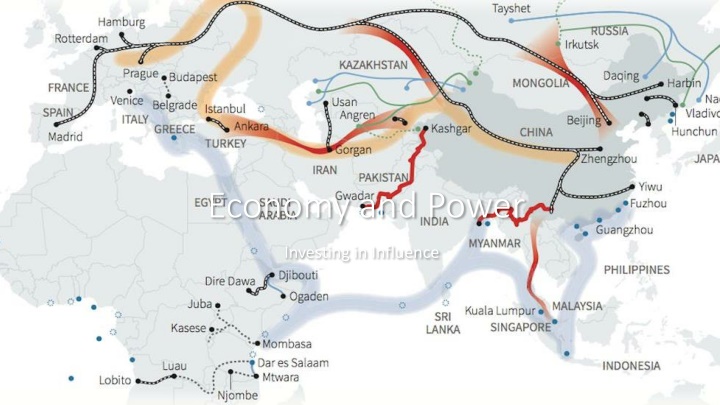
China's Belt and Road Initiative: Investing in Influence and Infrastructure
China plans to invest trillions of dollars in developing areas worldwide through projects like the Belt and Road Initiative, aiming to enhance its influence and connectivity. However, critics warn of potential debt traps and political repercussions in recipient countries.
Download Presentation

Please find below an Image/Link to download the presentation.
The content on the website is provided AS IS for your information and personal use only. It may not be sold, licensed, or shared on other websites without obtaining consent from the author. If you encounter any issues during the download, it is possible that the publisher has removed the file from their server.
You are allowed to download the files provided on this website for personal or commercial use, subject to the condition that they are used lawfully. All files are the property of their respective owners.
The content on the website is provided AS IS for your information and personal use only. It may not be sold, licensed, or shared on other websites without obtaining consent from the author.
E N D
Presentation Transcript
Economy and Power Investing in Influence
China intends to invest between one trillion and eight trillion dollars in the developing areas of the world by 2049 One Belt One Road It involves partnering with dozens of countries around the world through trade and infrastructure projects, such as shipping lanes, railroads, and airports. This will have significant implications for the future of the world
China intends to develop the infrastructure of the developing world This is particularly popular in countries that have questionable human rights records such as Pakistan Through these investments China hopes to display that its model of development can be applied and is a plausible solution Silk Goals To many countries this provides an alternative to the World Bank and its requirement for investment
Southeast Asia is a major part of China s plan This will allow China to become more integrated with the reason Southeast Asia China has a plan to build a highspeed railway that extends from Laos to Thailand China also has plans to build many new rubber solar and industrial manufacturing plants in Thailand This among other projects will provide China with a presence in Southeast Asia This railroad will significantly lower travel times and provide more interconnectivity
Debt Trap Opponents of the massive infrastructure project say that it is simply a way to force countries to concede politically to China through economic means While China plans to invest heavily in its peripheral regions this isn t altruism. China wishes to maintain a heavy trade surplus with these countries as they develop. This will allow China to more easily maintain its economic growth. This is demonstrated in practice Magampura Mahinda Rajapaksa Port, which is now leased to China
Pushback Mahathir Mohamad A politic leader in Malaysia and Prime Minister has referred to the investments China has made as selling the country to foreigners. MRL East Coast Rail Link is intended to connect eastern and western economic zones of Malaysia and will carry freight and passengers
Returns on Investment China has yet to recoup much of the money that it has invested in the countries around it but the project is only 7 years old, so the future is uncertain Regardless of economic implication it is certain that the One Belt One Road has brought China to a new position of power in the world Furthering many of the projects that are attributed to the belt and road existed prior and were just rebranded by President Xi of China
It is likely that President Xi views the Belt and Road Initiative as a pet project Despite stringent capital controls on any Chinese investments outside the BRI only 12% of Chinese foreign investments goes to countries participating in the BRI Shortcomings Roughly 1/3 of this investments goes to already developed nations such as Israel or South Korea. While at the same time many countries are mad at China for throwing its money around the prime minister of Malaysia even went so far as to call the project New Colonialism
https://foreignpolicy.com/2018/12/06/bri-china- belt-road-initiative-blunder/ https://www.businessinsider.com/what-is-belt- and-road-china-infrastructure-project-2018-1 https://www.cfr.org/backgrounder/chinas- massive-belt-and-road-initiative https://blogs.worldbank.org/trade/three- opportunities-and-three-risks-belt-and-road- initiative References
